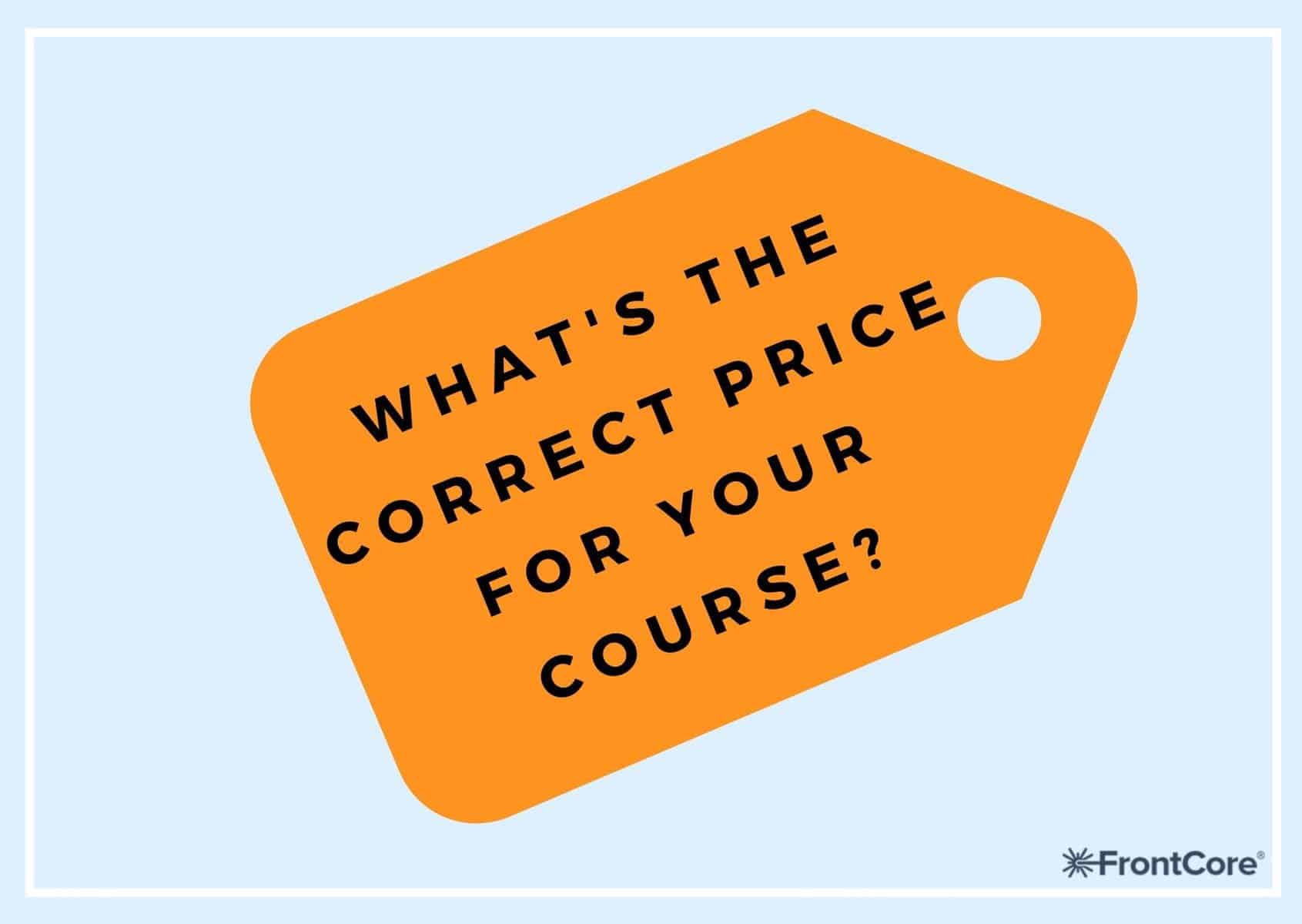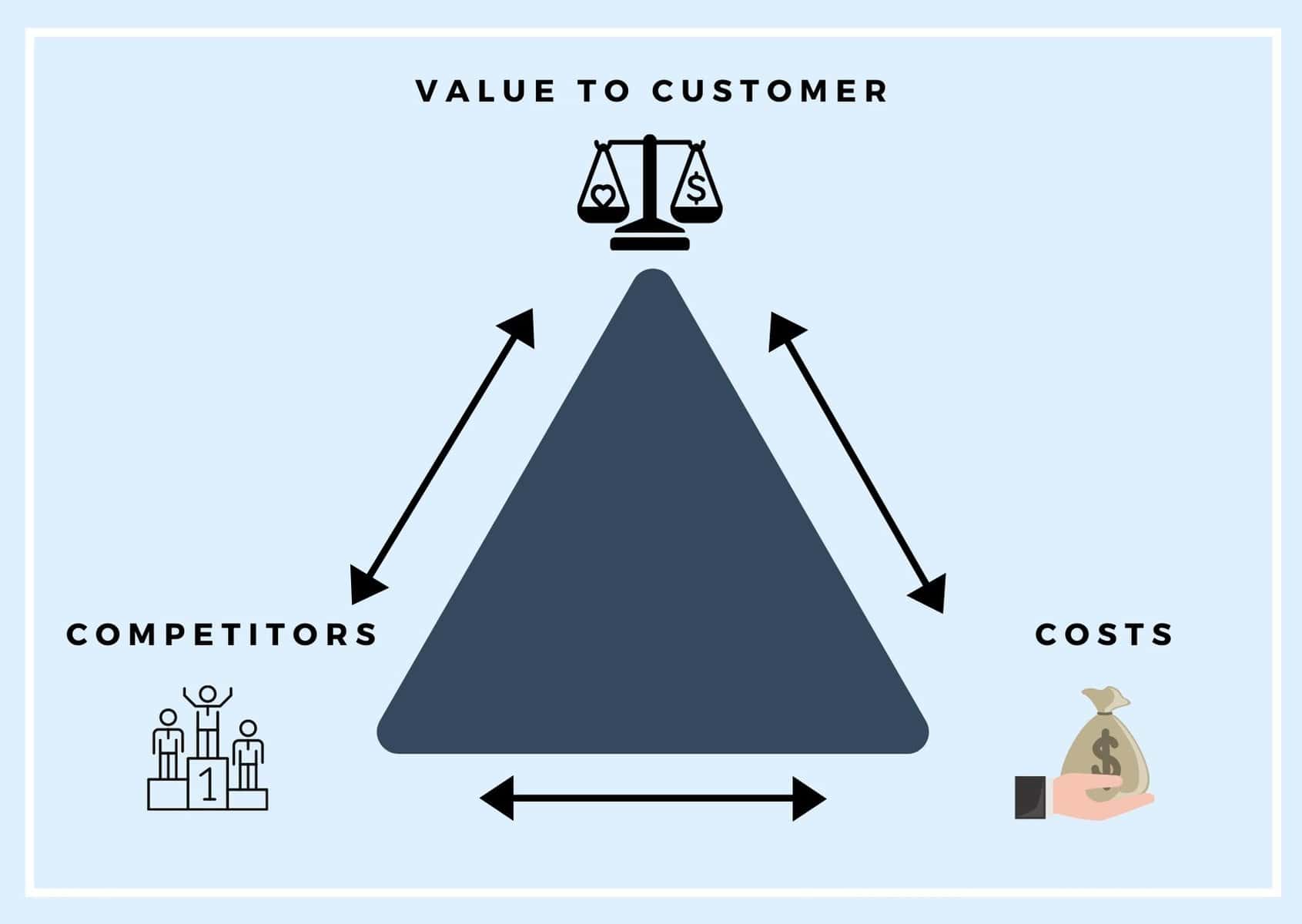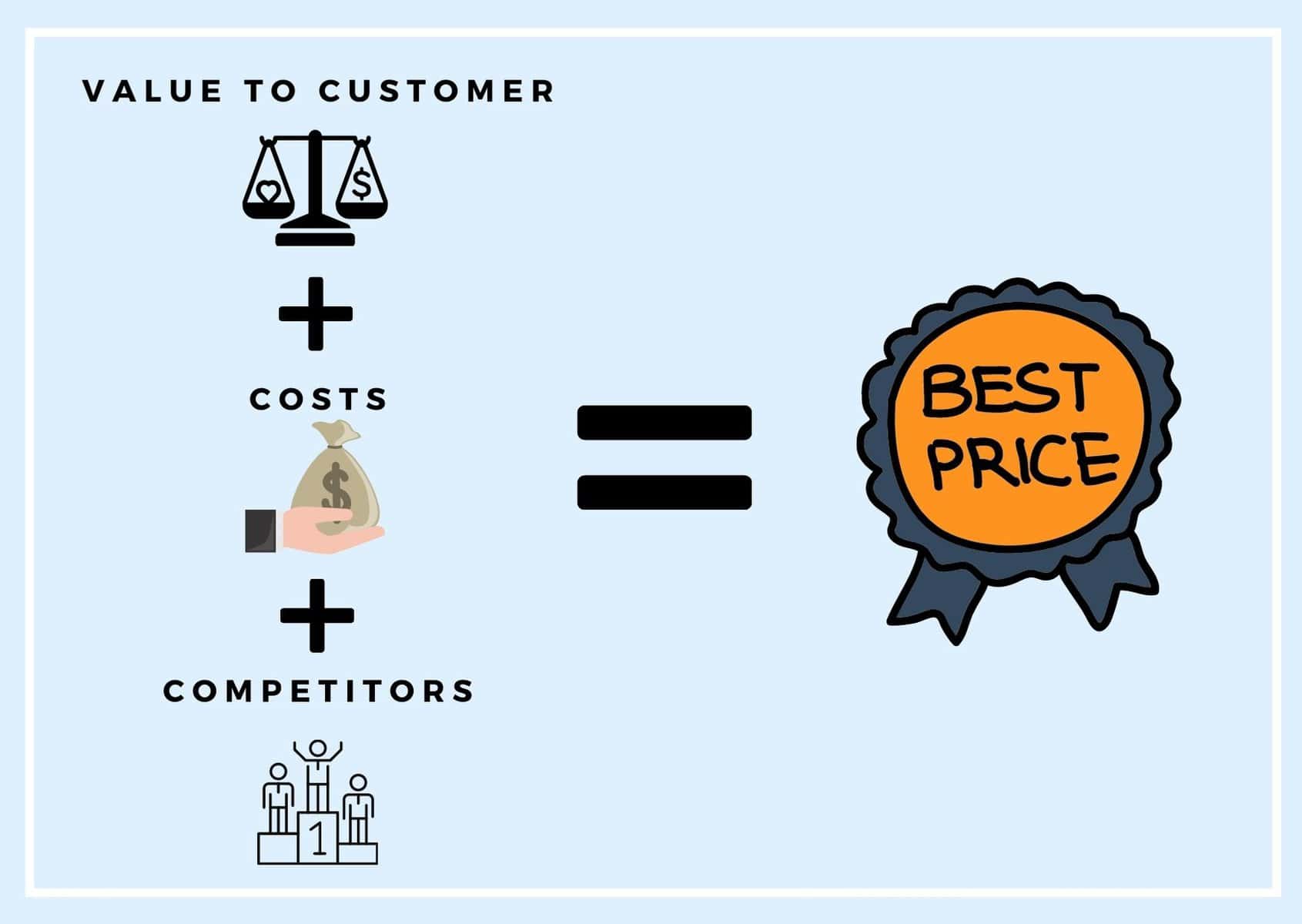You have definitely experienced for yourself how important price is to you as a consumer, and it is easy to know how much you are willing to pay for a product or service. What can be more difficult, however, is knowing what one should ask for a product or service. Why is it important to price your course properly? That is because the wrong price can cost you potential participants, both if it is set too high and too low. In this post I will explain a little about why price is important and how you can calculate the right price for your course!
What does the price convey?
A price is not just a number. A price symbolizes the product or service and what it is worth to both the seller and the buyer. When a participant buys a spot on a course, there is a change of value from the seller to the buyer, or from the course provider to the course participant. The participant buys the course because it has value for her/him, and the course provider then receives money or something else that has value.
What determines the price of the course?
There are several elements you should consider when putting a monetary value on your course. Three important elements are Value To Customer (VTC), costs and competitors. Separately, these all give an indication of where you should go in terms of price. But the very best thing is to use all three in combination so you ensure that the customer gets value for money, you operate profitably and competitively!
VTC – Set price based on perceived value for the customer
When it comes to value-based pricing, it is about what value a product or service gives to the customer. Value is often about what the customer feels they get in return for their money, either in the form of an experience, a nice item or a necessary need covered. Because the concept of value is so subjective, it can be difficult to price based only on VTC. Value will not only change based on what subjective perceptions customers have of value, but also based on the type of customer you are. An item may have high value for one person, but be worth less for another.
Customers are different, some benefit greatly from attending a course, while for others it may be an opportunity to experience something new. If the course participants want to learn something that is of high value, the price of the course can also be higher.
In a course context, VTC pricing can for example be useful if you are going to price packages for larger companies. If you are the only provider of the courses they need, your courses have a high value for the customer, and you can thus up your price.
What determines the customer’s perceived value?
You need to understand how your participants think in order to set a price the participants are willing to pay. The most common mistake for course providers to make, is to set a price that is too high for the customer. There will be differences based on whether the customer is B2C or B2B, as in B2B sales you have to keep in mind that many people in the company may have a say when it comes to whether to buy your course package or not. B2C is a bit easier, but here you lack the feedback you get when you sell to companies. If you struggle getting participants, maybe it’s because of a price that is too high?
To know if your course meets participants’ expectations for value for money, I would recommend using the course evaluations diligently. This is a tool developed specifically to give course participants the opportunity to anonymously provide feedback on the course they have attended. Enter a question about perceived value in relation to price in order to be able to adjust this continuously. That way, you avoid dissatisfied course participants who feel they have paid too much in relation to the value they were left with!
Will you be able to conduct course evaluations to see if your participants think your course gives them value for money? Read more about our course evaluation HERE!
Costs – Price based on your costs
If you structure the price of your courses according to costs, this means that you add up what materials, premises and salary for the course lecturer cost, and use this as your starting point for the price. In addition, you must of course add the desired profit to make it profitable!
Although cost-based pricing is an easy and straightforward way to price your course, you can quickly price it below market value using this method and thus lose potential revenue.
Now I will show you a method you can use to set a price for your course based on covering your costs.
Cost-based pricing
Cost-based pricing is based on what the service costs to buy, produce and / or deliver. A common method to use to calculate the right price in this way is called the cost-based pricing.
The cost-based pricing is a form of pricing which, in addition to the direct costs associated with the service, also takes into account the indirect costs the company has in delivering the service. Let me show you how this can be set up as a calculation:
Competitors – Set price based on competitors’ price
Pricing based on competitors means starting from what similar goods or services on the market cost, and then settling at about the same level. This can give a good indication of what participants are willing to pay for similar courses. I would always recommend checking the price of competitors regardless of which strategy you choose, to know if you have priced your courses any puddles correctly. You may also want to do this on a regular basis to check for changes in the market. Maybe your type of course has become very popular, and you can increase the price for a little extra profit!
However, it is important not to settle for a certain price level just because your competitors are there. You must always make sure that your costs are covered, and that the value you give to your participants is communicated so that they feel they get something in return for their investment.
Combo pricing
My perhaps best tip is to make use of all these three elements when you are going to appreciate your course properly. As a starting point, I would always use fixed and variable costs as a baseline for the price. Then I would have entered the market to check what competitors are taking for similar courses. Then you can, if you have extra items that make your course special, see if there is room to set the price because the value to the participants will be extra high!
If we then look at the direct costs as the price floor, and customer value as the price ceiling, you as a course provider have a space in between that you can take advantage of. You can charge a higher price and have good profitability, but sell fewer units (this is called skimming). Or you can have low prices and sell more units (this is called penetration). What is right depends entirely on your training company’s strategy.
By using all three component I have mentioned in combination, you will both ensure that your courses remain profitable, that you have not priced yourself too high or low in relation to the market, and that your customers are satisfied with what they have got value for their money!
Use price as a strategic advantage!
Being good at pricing correctly can be a strategic advantage. Many companies can earn a lot from setting the right price, because there may be a margin in the market to screw up the price. In addition, price can be a good tool in marketing, as many consumers and businesses are obviously concerned about this when searching for service providers.
Communicate your price clearly
Price is often also undercommunicated by many providers, especially B2B companies. This is a mistake many people make because they may think that customers are not concerned about price, or that their product is so difficult to price that the customer must contact them for a comprehensive price assessment. But this is a big mistake because price is one of the first things customers look at when comparing several providers of the same product!
When the price is not clearly communicated, it can give the impression that the company has something to hide, or has such a high price that they do not want to go public with it. It is important to remember that most companies and consumers carefully compare alternative providers, and that price is often one of the main points they use to differentiate. If you are open, clear and distinct in your price communication, this can give you great advantages when it comes to such a comparison – not necessarily because you are the cheapest, but because you show that you are honest and transparent in your communication!
There is little knowledge in the market about price and pricing strategy, but this is a topic that is only becoming more and more important. Many companies, for example, have started with more dynamic pricing approaches such as revenue management. If you are lazy when it comes to updating your prices according to the market or the customer’s perceived value, you can quickly be overtaken by competitors, or be abandoned by your customers.
To conclude the post, I would encourage you to take a closer look at how you can turn pricing into a strategic benefit for your business. In addition, you should watch this video where Neil Patel talks more about Pricing Strategies, and how you can maximize your profits using the right pricing!
Sources:
The post is in addition to sources mentioned below based on lectures given by Assistant Professor in Marketing Anders Mamen, in the subject Strategic pricing at Høyskolen Kristiania University College.
Nagle, Thomas T., John E. Hogan, and Joseph Zale. 2011. The strategy and tactics of pricing: A guide to growing more profitably. 5th ed. Edinburgh Gate: Pearson Education Limited. ISBN: 9781292023236.
Dutta, Bergen, Levy, Ritson and Zbaracki. 2002. “Pricing as a Strategic Capability”.
Can be read here!
Did you like this article? Don’t forget to share it:










0 Comments